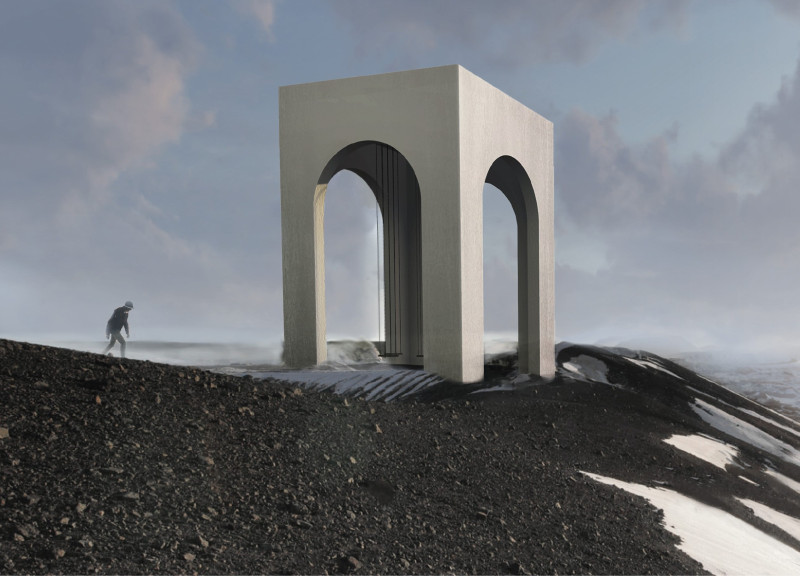5 key facts about this project
The project titled "Swinging on the Edge" is an architectural design for a lookout point located near Hverfjall volcano in Iceland. This structure serves multiple functions, including offering panoramic views of the surrounding landscape and encouraging recreational use through the incorporation of swings. The design reflects a seamless integration with its geological context, utilizing materials and forms that resonate with the Icelandic terrain.
The architecture employs monumental arches that frame views of the volcanic landscape, establishing a connection between the man-made structure and the natural environment. The elevated cubic form of the observatory is carefully positioned to maximize sightlines and immerse visitors in the dramatic scenery. By placing swings within this setting, the project promotes an active engagement with the environment, inviting visitors to experience the views both physically and emotionally.
Design Approach and Functionality
A primary feature distinguishing this project is its unique approach to user experience through playful design elements. The swings are not merely recreational but are integral to the overall experience of the lookout point. They encourage interaction, allowing users to engage with the landscape dynamically. This element fosters a connection between visitors and their surroundings, contrasting the static nature of the surrounding terrain.
Materiality is another crucial aspect of the design. The project utilizes stone and concrete to anchor the structure within its volcanic context. Stone provides durability and stability while allowing the observatory to blend with the natural rocks of the region. The use of steel cables for the swings introduces a lightweight quality, enhancing the sense of movement and flexibility in the design. The overall material selection reflects an understanding of the harsh Icelandic climate, emphasizing sustainability and long-term performance.
Innovative Design Details
The project’s drainage system is designed with careful consideration of local weather patterns, addressing challenges posed by snow and rain. This foresight ensures the functionality of the structure throughout various seasons, contributing to the longevity of the design.
Furthermore, the spatial organization of the observatory facilitates a range of experiences. Individual swings promote contemplation, while larger swing installations foster community interaction. This versatility enhances the appeal of the structure, making it a destination for both solitary reflection and social gatherings.
Overall, "Swinging on the Edge" exemplifies a thoughtful synthesis of architectural design, user engagement, and environmental consideration. By exploring architectural plans, sections, and design ideas, readers can gain a deeper understanding of this project and its contributions to landscape architecture and design methodology. For a comprehensive view, it is beneficial to explore the architectural presentation detailing the visual and functional aspects of the project.



















































